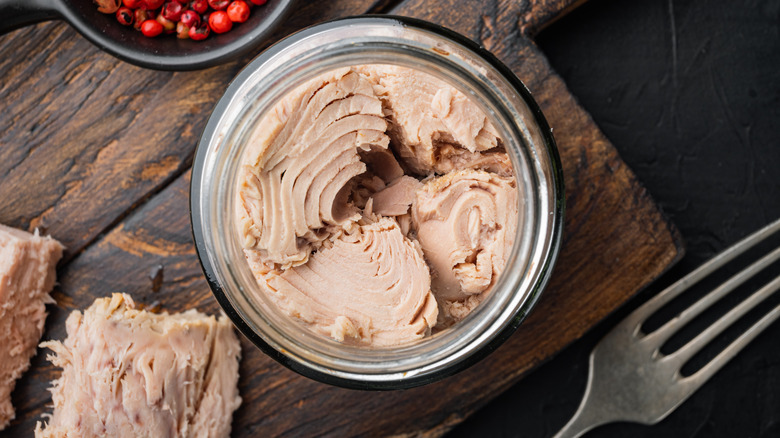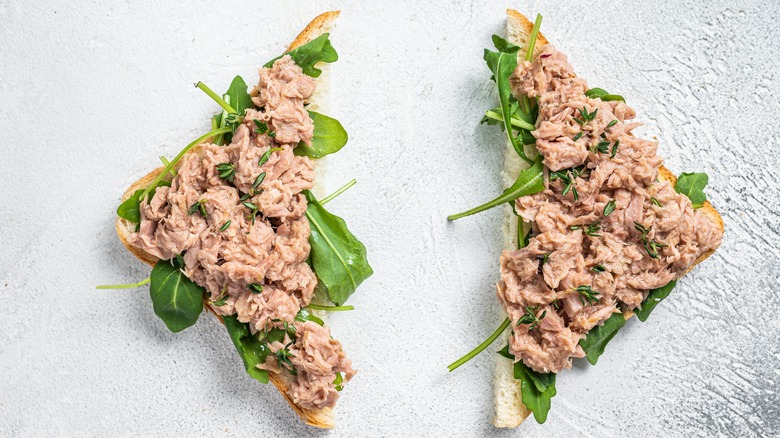Why You May Want To Choose Canned Tuna Over Fresh
Despite featuring in the Mediterranean diet, seafood should be eaten in a regulated manner. This, as pregnant people and parents have long been told, is because the level of mercury in seafood has risen to the point that it presents a real health concern.
Food Print explains that although we all consume some amount of naturally occurring mercury, human action like burning fossil fuels has raised the total amount of mercury in the atmosphere. That mercury is absorbed by plankton and algae which in turn is eaten by small fish. It re-enters our lives, however, when a tuna or some other bigger fish eats the smaller fish, meaning they absorb the absorbers and so concentrate the amount of mercury.
Consuming large amounts of mercury can hurt one's fine motor skills, logic, and memory (per Healthline). Other symptoms can include depression, anxiety, and a greater propensity towards heart attacks. These core damages are the reason why pregnant people and developing children are advised to avoid consuming tuna, as they are at most risk of these developments.
Canned tuna is better but not by much
Many see the high levels of mercury in tuna and use that as a selling point for canned tuna. 9Honey summarizes the argument, writing that "given canned tuna is generally made from smaller tuna fish that are caught within their first year of life, Food Standards Australia and New Zealand say eating a can of tuna per week is perfectly fine, even for pregnant women." Since the tuna is smaller, there is less body to absorb mercury and since it is younger, it has had less time to consume other fish that form the mercury poisoning chain.
Healthline puts the amount of mercury in 3 ounces of canned Light Tuna and canned Albacore Tuna at 10.71 micrograms and 29.75 micrograms respectively. It should be noted that while Light Tuna does have significantly less mercury, Albacore Tuna has about the same as most fresh tunas, including its fresh counterpart, which Healthline puts at 30.43 micrograms per 3 ounces.
In practice, Consumer Reports suggested in 2015 that a 143 pound man can have 4 ounces of albacore tuna and 13 ounces of light tuna per week. Healthline follows a similar rationale, saying you can have light tuna as part if your 2-3 servings of fish per week. Other types of tuna, however, need to either be a treat or ideally avoided altogether.

